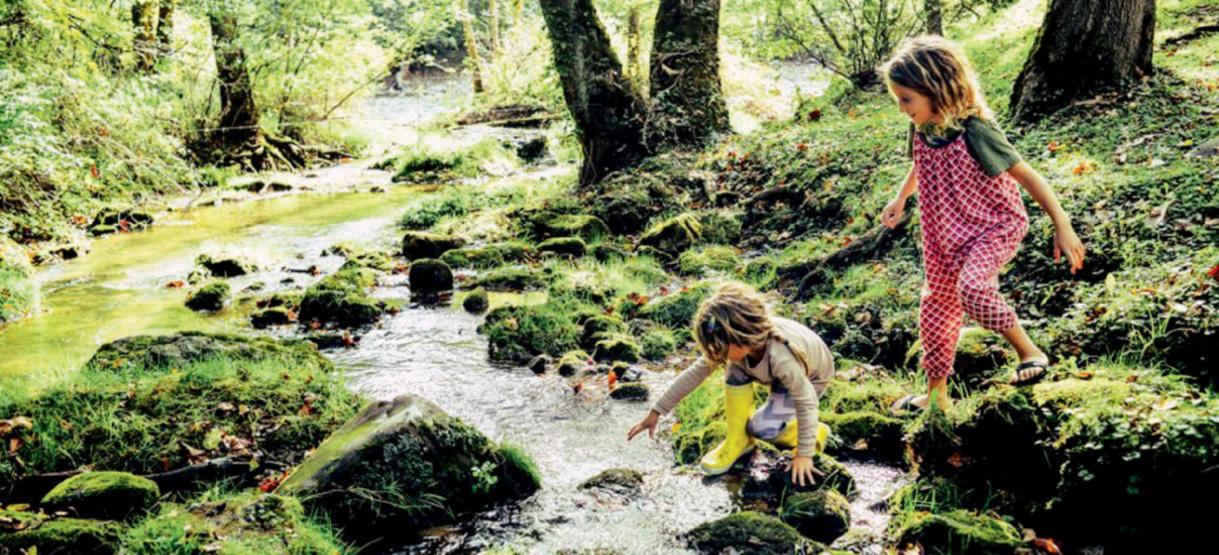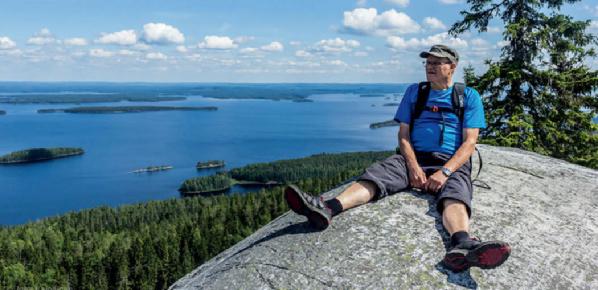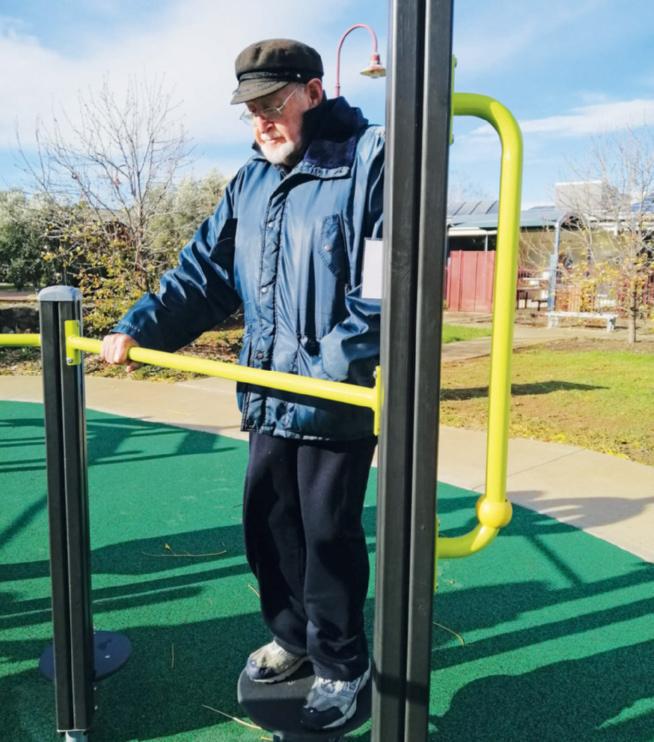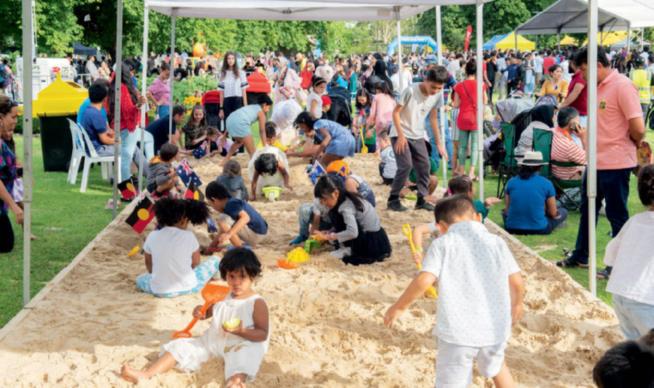
8 minute read
Chair and CEO Research Connections
RESEARCH
CONNECTIONS
AUSTRALIA AND NEW ZEALAND
THEORY OF PLANNED BEHAVIOUR: PREDICTING TOURISTS’ PROENVIRONMENTAL INTENTIONS AFTER A HUMPBACK WHALE ENCOUNTER (2019) Authors E Clark, K Mulgrew, L KannisDymand, V Schaff er & R Hoberg Abstract Nature-based experiences can contribute to individuals’ connection to nature and intentions toward sustainable environmental behaviours. Conservation psychology can use tourism as a platform to modify tourists’ intentions and behaviours regarding key marine threats such as single-use plastics. This study examined changes to pro-environmental intentions, particularly regarding plastic use, in 267 nature-based tourists from Australia and Tonga who completed a whale watching/swim experience. A theory of planned behaviour (TPB) framework was used incorporating moral norms and environmental identity, which have been previously implicated in explaining proenvironmental actions. This study found that including moral norms in the TPB model signifi cantly increased the ability to predict pro-environmental intentions. Further, when controlling for the TPB and moral norm variables, environmental identity explained a further 15% of tourists’ pro-environmental intentions. The fi ndings suggest the original TPB model may be less suitable within a marine conservation context. Published Journal of Sustainable Tourism, 27:5. pp 649-667 Download doi.org/10.1080/09669582.2 019.1603237 Cost $44 (US)
THE NEXT FRONTIER IN TOURISM EMOTION RESEARCH (2019) Authors Brent D Moyle, Char-Lee Moyle, Alexandra Bec & Noel Scott Abstract Emotion is emerging as a central concept in tourism research, critical for the delivery of memorable tourism experiences. However, existing approaches in tourism do not adequately explain the process by which emotions are elicited. Recent advances in cognitive and neuropsychology demonstrate that emotions are elicited through an appraisal process, which occurs in the cortex of the brain. These processes produce chemical monoamine neurotransmitters that lead to bodily feelings, which in turn enable our brain to recognise emotions. This research note draws on Lövheim’s Cube, a self-report scale that provides a proxy indicator of the likely presence of monoamine neurotransmitters of serotonin, dopamine and noradrenaline. Six images of the Great Barrier Reef were used as a stimuli in an online panel survey (n = 1249). Results demonstrate that images used by tourism stakeholders are likely to produce stronger neurological reactions than images from an environmental nongovernmental organisation. Combining recent advances in self-report methods with a neurocognitive approach has the propensity to off ers additional insight into emotional reactions to visual stimuli. Further research should focus on the effi cacy of utilising self-report measures with cutting edge psychophysiological techniques, such as ambulatory electroencephalography (EEG) to open the door to the next frontier in tourism emotion research. Published Current Issues In Tourism, 22:12. pp 1393-1399 Download doi.org/10.1080/13683500.2 017.1388770 Cost $44 (US)
URBAN HERITAGE WALKS IN A RAPIDLY CHANGING CITY: TENSIONS BETWEEN PRESERVATION AND DEVELOPMENT ON THE GOLD COAST, AUSTRALIA (2020) Author Zelmarie Cantillon Abstract This article examines the emergence of urban heritage walks on the Gold Coast, Australia. As a popular beachside mass tourism destination, the Gold Coast has a longstanding reputation for rapid development and for lacking historical and cultural depth. In this context, heritage walks present an opportunity to reorient the city’s identity and to stage a sense of heritage in the urban environment. Focusing on a case study of the Gold Coast’s Southport Heritage Walk (SHW), this article aims to analyse the discursive, material and political dimensions of urban heritage walks, and how practices of heritage unfold in places marked by rapidly changing urban landscapes and resident populations. Drawing on observational fi eldwork, as well as interviews with key individuals involved in designing the walks, the article discusses the dominant narratives of history and urban identity enshrined in the SHW, and how these discourses are encountered and interpreted within the context of the contemporary materialities of lived space. Although the SHW aims to highlight the city as a place with a rich history and heritage, the walk’s missing interpretive markers and scarce remnants of built heritage instead emphasise the city’s ongoing tensions between development and preservation. Published Journal Of Heritage Tourism, 15:2. pp 149-163 Download doi.org/10.1080/174387 3X.2019.1618315 Cost $44 (US)
MINDFULNESS PROMOTES SUSTAINABLE TOURISM: THE CASE OF ULURU (2019) Author Eugene Y Chan Abstract Mindfulness refers to the state of being aware, taking note of what is going on within oneself, without any judgment. Mindfulness has been shown to aff ect decision-making, empathy, and sustainability in non-tourism contexts. We conducted an experiment to see if mindfulness can promote sustainable behaviours in a tourism context. After listening to a mindfulness-inducing audio track, participants expressed a lower preference for a group tour to Uluru, NT, Australia, that prominently featured climbing the sandstone formation as part of the package. Process data suggested that being mindful made participants more aware of the environmental and cultural consequences of their decisions. Our fi ndings contribute to the growing
literature on the many positive impacts of mindfulness on individual and social well-being – this time within a tourism context in which both mindfulness and sustainability are showing important applications as well as consequences. Publication Current Issues In Tourism, 22:13. pp 1526-1530 Download doi.org/10.1080/13683500.2 018.1455647 Cost $44 (US)
UNLOCKING THE POTENTIAL OF TRACKING TECHNOLOGY FOR CO-CREATED TOURISM PLANNING AND DEVELOPMENT: TOURISM TRACER (2020) Authors Richard E Eccleston, Anne L Hardy & Sarah Hyslop Abstract Tourism industries and governments have typically been slow to embrace technology and data analytics as planning and development tools. The Tourism Tracer team in Tasmania used technology to fi nd out where tourists go and collect other information about them. The team collaborated with stakeholders on project design, including survey questions, recruitment design, Dashboard features and functionalities, and reporting. An app collected locational and survey data from approximately 1000 tourists. This data was disseminated back to the community on the Tourism Tracer Tasmania Dashboard. Further specifi c data analytics were sought for infrastructure planning, road safety planning, and a better understanding of conversion and dispersal. With clear benefi ts fl owing to many stakeholders, platforms such as Tourism Tracer should be regarded as key infrastructure that deliver “public goods” to the industry and wider community. While the values of such technologies are widely recognised, governance and funding issues remain. Published Tourism Planning & Development, 17:1. pp 82-95 Download doi.org/10.1080/21568316.2 019.1683884 Cost $44 (US)
USING INNOVATIONS TO UNDERSTAND TOURIST MOBILITY IN NATIONAL PARKS (2020) Authors Anne Hardy & Jagannath Aryal Abstract Technological advances have had profound impacts upon tourists’ mobility. However, until recently, there has been a gap between technological advances and their integration into tourism research methods. This paper addresses this gap by presenting a research method that utilised an application (app) equipped with a synthesised demographic survey and Global Navigation Satellite System (GNSS) technology. This enabled automated tracking of tourists’ behaviour for their entire stay within the island state of Tasmania, Australia. This paper focuses on tourists’ movement within the well-known Freycinet National Park. The highly detailed granular data were assessed in three phases, revealing segments of tourists more likely to use the walking tracks, those more and less likely to visit during peak crowding times and fi nally, the development of an automated spatio-temporal dependence model via a machine-based learning environment, designed to operate in real time. The paper details the implications that innovative methodologies such as this may off er natural resource managers and tourism authorities, particularly in terms of locating, assessing and ultimately alleviating crowding and overtourism. Published Journal Of Sustainable Tourism, 28:2. pp 263-283 Download doi.org/10.1080/09669582.2 019.1670186 Cost $44 (US)
INTERNATIONAL
PLANNING FOR CLIMATE CHANGE IMPACTS: COASTAL TOURISM DESTINATION RESILIENCE POLICIES (2020) Authors David Jarratt & Nick J Davies Abstract Coastal tourism is a vital part of the world economy but also facilitates access to “blue spaces” — this off ers signifi cant health benefi ts to populations and shapes our relationship with the coast. At present, climate change impacts on the coast, such as storm surges and rising sea levels, are an inevitability and in some regions are already damaging coastal tourism economies. Given the importance of coastal tourism, this new relationship needs to incorporate adaptive measures; including a blue space and wellbeing focus, education and awareness of challenges facing the natural environment. We make this case by re-evaluating the literature on coastal tourism and climate adaptation policies. Using recent examples, we also off er an indication of new policy directions for coastal destinations. At present coastal tourism plans and policies largely ignore how destinations might respond and adapt to climate change impacts. We critique this and suggest that the human–environment relationship should be placed directly at the centre of all thinking on this topic. Published Tourism Planning & Development, 17:4. pp 423-440 Download doi.org/10.1080/21568316.2 019.1667861 Cost $44 (US)
CURRENT STATE AND DEVELOPMENT OF AIRBNB ACCOMMODATION OFFER IN 167 COUNTRIES (2019) Author Czesław Adamiak Abstract The paper examines the size, structure, distribution, dynamics, and use of Airbnb accommodation off ered in 167 countries. Web-scrapping Airbnb website in fall 2018 and 2019 resulted in datasets on 5.7 million listings. Listings are divided into four groups based on types of properties and numbers of off ers hosted by one platform user. The results show that the platform is most commonly used to rent out entire apartments by multi-hosts. The numbers of Airbnb listings in countries depend on the level of economic development and size of inbound tourism. Airbnb off er grows most quickly in its relatively new markets, while in primary urban destinations of some European countries it is stable or decreases. The off er of professional hosts is growing more quickly than of peer-to-peer hosts. Diff erences in the frequency of use and prices of listings exaggerate the geographical unevenness in benefi ts and impacts of Airbnb activity. Airbnb supply is not a uniform segment of tourist accommodation and its eff ects on destinations should be considered in relation to territorial context. Published Current Issues in Tourism Download https://doi.org/10.1080/1368 3500.2019.1696758 Cost FREE
CALL FOR ARTICLE ABSTRACTS
Abstracts of research projects of interest to PLA members are always welcomed, in particular research relating to: • Community and urban planning • Community and open space planning • Sustainable design • Landscape design • Parkland design • Grounds maintenance • Cycleways/ walkways • Planning for play • Vertical walls and green roofs • Trends and future directions Abstracts are required by 21 December 2020. Please forward material or enquiries to John Wood at jwcs@bigpond.net.au










